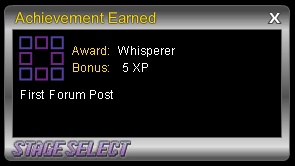Some time back I slapped together some hardware for the express purpose of capturing and streaming video game footage, which I’ve done a fair amount of (and I even managed to raise a couple of dollars for charity).
Lately, though, I’ve been going through some of my old NES games, getting them cleaned and testing them, and capturing some short clips for one reason or another, and then this happened.
The picture started freaking out. I played it anyway for a few minutes just to check out the scrambled mess that resulted, put it on Youtube, shared it around, and had some fun with it.
Then, the next night, I moved on to Castlevania III, and it happened again, worse, somehow.
So, why is this happening? Well, my NES is about 30 years old now, so the age of the hardware could be an issue, but that’s only a part of the problem.
Problem #1 – A worn out internal connector. The ‘Toaster’-style NES is probably the one most recognized by just about everyone who has even a passing interest in the NES. It had a funky method of inserting the games where you inserted the cartridge, and then locked it in the ‘down’ position via some internal hardware. This bends the receiving pins slightly every time you insert a cartridge, and, thanks to metal fatigue, they eventually don’t spring back into place as well any more. This means that eventually, those pins will fail completely and no games will work. Before that, though, they’ll just get intermittent.
Problem #2 – The 10NES lockout chip is fussy. You may not have heard about the 10NES lockout chip, but if you’ve spent a lot of time with the NES hardware, you’re probably familiar with one of the tell-tale symptoms of it being fussy: the flashing title screen. There’s lots of information about it on the Internet if you want to look it up, but most of the information seems to imply that you should just disable the chip completely, which I may do someday (sorry, Nintendo).
Problem #3 – Blowing in the cartridges. This is something that everyone (really, everyone) who played video games in the NES heyday knew about: game not working? Blow into it to ‘get the dust out’. Which, it happens, did work. For a while. Eventually, it stopped working, or it took more and more tries to blow out the ‘dust’. It turns out that blowing in the cartridges wasn’t such a great idea. It worked in the short term because the breath from your lungs contains some moisture, which got on the contacts, and that made them more electrically conductive, to the 10NES chip was satisfied and you went down the road playing whatever. But, electricity plus moisture can equal corrosion, and that’s what a lot of NES games are suffering from now.
Problem #4 – Improper cleaning. Since a lot of these cartridges are now quite old and many have not been maintained well, it’s not uncommon to find one with lots of corrosion or dirt or worse fouling up the pins. So, you’ll, of course, want to clean them to give them the best chance (and to not foul your system). The cleaner that I’ve always used and recommend is some isopropyl alcohol, a cotton swab, and some elbow grease (maybe also a screwdriver with a security bit, for good measure). That will take care of most forms of gunk that accumulates on cartridges. If you come across something that that won’t handle, you can work your way up to stronger stuff like pencil erasers, and even high-grit sand paper(!) in extreme cases. Some people advocate using things like stove cleaner as a routine step, but that makes me extremely nervous. I’m a huge advocate of using the least-potentially-damaging material first, and then working my way up to the tougher stuff if needed. Some people like shortcuts, though, and I get that. So, it’s possible that I got a cartridge that belonged to an overzealous cleaner who damaged some of the connecting pins on the cartridges.
Now that I look back on it, with the possibilities of everything that could and did go wrong, I’m impressed that I could even get the NES to work at all. Then or now.
